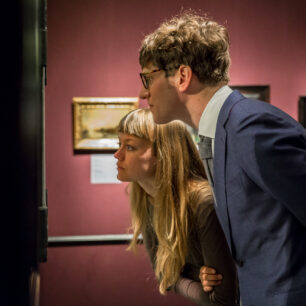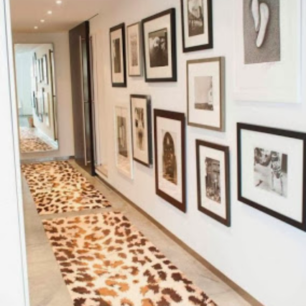
It used to be that trusting your gut and closing a deal with a handshake was enough to close a deal but now that the art market has exploded in recently years, collectors need to be much more vigilant and wise when it comes to art research, insurance and legal protection. The key to protecting yourself as an art collector from the many pitfalls and challenges that come with being a custodian of fine art collectibles is due diligence.
Here are 5 best ways to minimize your risk when buying or selling your art.
1. AUTHENTICITY
Unfortunately, art fakes and forgeries remain a real risk to collectors despite the fact that there is a lot more transparency in the market today. Throughout art history there have been famous forgers who successfully evaded the law and went largely undetected by authorities, some even selling works at top auction houses. Wolfgang Beltracchi, a German art forger and artist, admitted to producing hundreds of fake paintings well after his ruse came to light. Han Van Meegeren managed to sell $60m worth of fake Johannes Vermeer works to some of the most discerning buyers in the world. British painter, John Myatt was called the “biggest art fraud of the 20th century”, forging numerous paintings by Claude Monet.
To verify the claimed attributes of an object, or its creator, one needs to look for more than just a signature on the work. Always question the source and make sure the seller, or owner looking to sell is a reputable source and immediately reject any anonymous owners or donors.
Look through the catalogue raisonné of that artist to confirm the work has been vetted by that artist’s estate or foundation or research publications to see if the piece that have been featured. Publications are often a verifying source of information. If you can’t hop over to the Frick or to the New York Public Library however, you can go online and check out Artifex Press’s website to check for publications. Their mission is to build the world’s first electronic archive of catalogue raisonnés available to the public online–quite a noble feat.
You can also consult with experts in the field. Many will be happy to provide a verbal or written opinion document but bear in mind they will charge a fee for their service. The College Art Association is a great resource and they have a large network of reputable art professionals who are relatively easy to contact. Once an opinion document is obtained, I would recommend finding a lawyer to review the document and ensure that the language is tight enough to hold up in the court of law.
If all this is too time-consuming or daunting, at the very least you should ask for a Certificate of Authenticity (COA) from the seller or owner before purchasing any work of art to verify authenticity. If any of the claimed attributes that were presented by the seller or owner are not consistent with any separate objective authenticity studies that have been conducted then it is a red flag.
2. CONDITION & MATERIALS ANALYSIS
The first step to assessing the current condition of an art object is to visually inspect the object yourself in person. This may seem obvious but surprisingly many people skip this process because they would not know what to look for exactly. Obvious areas of damage or wear and tear on the object may be readily apparent however be sure to inspect the back and sides of the piece for any irregular or unusual markings. Sometimes it’s part of the work but it is good practice to ask about it anyway. Look for cracks, tears, mold, or anything out of the ordinary. Check to see if the painting has been lined–an old way of preparing a canvas that is known to cause damage to old master paintings. If possible, take the physical object to an art expert who can inspect it further with a blacklight (or buy your own!) which can reveal in-painting or areas of restoration. Restoration jobs have been known to do more damage to a work than good so any signs of past restoration could significantly impact it’s value. You can also use an appraiser’s loupe, or magnifier to view tiny details not readily visible to the human eye.
To be 100% sure of the condition however, it is advisable to retain a reputable conservator and ask them to prepare a formal condition report for you. Bear in mind that you will need to make arrangements to deliver the piece so they can inspect it in person so proper packing and handling will be needed. Once you receive the final condition report read it carefully. A good report has thorough explanations and complete and detailed conclusions (not shorthand). Be discerning when reviewing the reports and ask questions about anything you might not understand. Conservator’s language can tend to be quite technical!
It is also wise to contact a forensic lab to test a painting or object in order to confirm that the materials are as they are claimed to be. When some of the Knoedler paintings were analyzed after the forgery scandal, for example many fibrous hairs were found stuck in the paint that were not appropriate for the period it was dated–a dead give away that it was a forgery. So don’t be afraid to go the distance in making sure you have the real McCoy. Also, a good lab should only accept the physical object for testing, not mere paint samples.
3. PROVENANCE & EXHIBITION HISTORY
Provenance is the origin of a work of art and according to a New York Federal Judge, it is the basic duty of any purchaser of a work of art to examine the provenance for that work. Ideally, the seller should volunteer all necessary documentation on an object before the purchase but if not, you should feel obliged ask for it. Provenance also helps to verify authenticity so it’s more than just a history of ownership. Always check the back of a work of art to spot any labels or written markings that may reveal its previous ownership or any exhibitions it was consigned to in the past. They are important clues which can help determine the history of the work. You also want to make sure the artwork has not been reported lost or stolen before. Three good resources are IFAR, the Art Loss Register (for stolen art listings) and Art Recovery International.
Feel free to contact museums to confirm whether or not an object was in a past exhibition and ask if there is a catalog featuring the art. If not enough information is available try to contact an independent expert to get their professional opinion about the work.
A simple way to gather background information on provenance is to do a search on a Price Database for auction results such as artnet and click on Lot Details for more information about the lot. You can also find past auction results on some auction house websites like Christie’s and Sotheby’s. Auction results contain all the pertinent details of the lot, including provenance and exhibition history.
Digital archives are also available, depending on the object. The Archives of American Art has over 16 million items and is the world’s largest resource dedicated to papers and primary records of the Visual arts. When buying an artwork also be wary of evolving provenances where the seller changes the story on you after it was already been established.
Provenance is often very difficult to gather and prove so it is good practice to hold the seller, if possible fully responsible for the accuracy of the provenance provided regardless of the fact that the buyer is responsible for proper due diligence. Ronald D. Spencer, at Carter Ledyard & Milburn, stated that “making all of this clear in the sales contract is unquestionably in everyone’s interest, even if—much like a prenuptial agreement—it spoils some of the romance associated with the purchase of Fine Art.”
4. CONNOISSEURSHIP AND HISTORICAL CONTEXT
Understanding the quality of an art object and being able to decipher the difference between a good work and a bad work takes time and patience. If you don’t have a PhD or Masters in Art, you may still have enough years of experience dealing with a particular artist’s oeuvre to know which works by the artist are historically relevant and are emblematic of the artist’s process as well as be able to determine what aspects or nuances accurately reflect the artist’s original intent. If are not confident with your own level of expertise or weren’t born with the proverbial “eye” for art, seek out a scholarly or expert opinion instead.
Curators and professors have a wealth of knowledge and usually love to share what they know. It is relatively easy to contact the school, gallery or museum and get in touch with them. You can also try to solicit their feedback via email or social media networks, if possible. You could gain a tremendous amount of valuable information about the artist or work of art so it’s worth the effort.
5. DETERMINING VALUE
The four most reliable ways to determine the fair market value (FMV) of an artwork are: appraisals, auction estimates, price databases and art market analytics. Every appraisal should follow the USPAP guidelines and appraisals can only be obtained from appraisers who are USPAP certified. The Appraisers Association of America has a nifty function on their website where you can input your zip code and access appraisers who are near your home. Also, a simple free search on most major auction house websites will provide auction results for artists that have come up at that auction house before. You can use these auction results as comparables for determining the FMV of your work. Keep in mind results from just one auction house only offer a partial picture of that artist’s market.
Price databases offer comprehensive and complete pricing picture of an artwork such as Artinfo.com (free searches) or artnet which for a fee, archives over 8 million results culled from over 1600 auction houses worldwide. To track the market performance of a specific artist or artwork, there are also Art Market Analytic Reports that provide quantitative information where you can even track the market against other indices such as gold or the S&P 500.
In conclusion, beware of “conscious avoidance” where you close your eyes to red flags around you. Try a few of these tips to minimize your risk instead!
Need help researching a work of art? Email me at heidi@hlkartgroup.com












